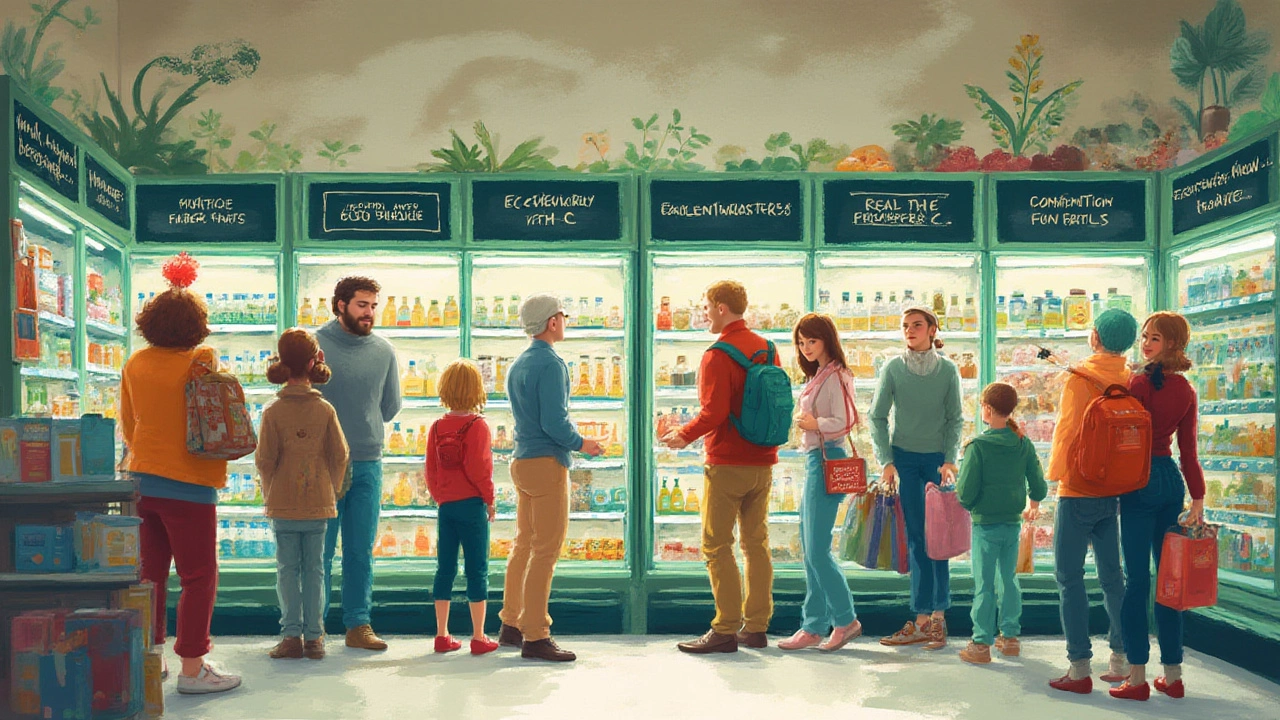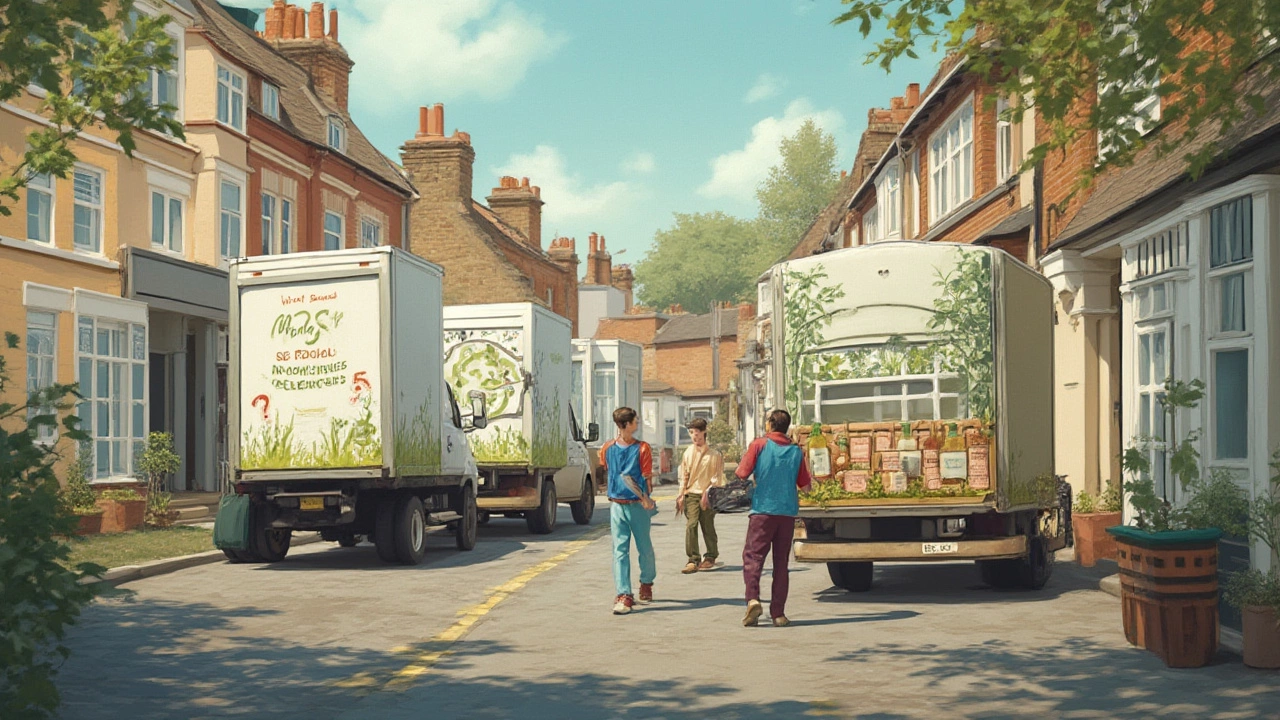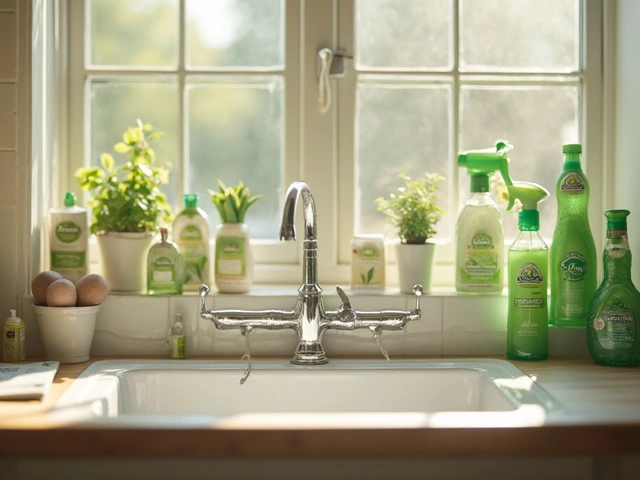Walk into any store and it’s hard to ignore — that eco-friendly disinfectant spray, window cleaner, or laundry powder usually comes with a higher price tag than the old-school brands. Why do the good-for-the-Earth options dig deeper into your wallet? The truth is more tangled than just “organic costs more.” If you’ve ever felt burned paying $8 for green wipes or wondered if it’s just marketing, let’s break it down. There’s a lot happening behind the scenes that might surprise you, from ingredient sourcing to intense testing, tiny batches, and even legal hoops. And, no — you’re not just paying for a pretty label with a leaf on it.
What Sets Eco-Friendly Cleaning Products Apart?
If you grab a bottle of mainstream cleaner and compare it to a green competitor, one thing jumps out: what’s inside is very different. Most traditional cleaners are built mostly from synthetic chemicals and petroleum byproducts — cheap stuff, easy to mass-produce. Eco-friendly cleaning products skip harsh chemicals like ammonia, chlorine bleach, phthalates, and synthetic fragrances. Instead, they use plant-based surfactants, natural scents (lemon oil, peppermint, eucalyptus), and biodegradable stabilizers. Sourcing these ingredients can be way pricier. For example, coconut-derived surfactants can cost 5 to 10 times more than their petroleum-based cousins. Essential oils run much higher than synthetic fragrances, too — lavender oil can cost about $45 per pound, while synthetic scents might be a tiny fraction of that.
It’s not just about swapping chemicals for plants either. Eco brands have to make sure their products break down quickly after you wash them down the drain — that’s what biodegradable means. Sometimes, that means spending extra to avoid toxic preservatives. They need to source ingredients that are renewable and have a lower carbon footprint along the entire supply chain. To call something “eco-friendly” or “green,” a brand also faces tight rules and certifications. Certifications like USDA Organic, EPA Safer Choice, or Ecocert aren’t free. Each one can cost thousands of dollars per product, per year, not to mention the costs of yearly audits and lots of official paperwork.
The True Costs of Production: Sourcing, Scale, and Certification
The logistics behind eco-friendly cleaning product manufacturing are a maze — and they rack up costs at every turn. Because these companies commit to sustainably-sourced, non-toxic ingredients, they source from smaller producers instead of relying on mega-suppliers. Small-batch ingredient farms don’t get the bulk pricing breaks that giants like Procter & Gamble enjoy. And on top of that, harvest yields of many plant-based raw materials can swing wildly year to year, especially with climate disruptions, which drives up prices and creates more financial risk for brands.
Another major hurdle? Eco-cleaning companies rarely have the factory muscle of the big names. They operate at a smaller scale, so they miss out on the same deep discounts on packaging, ingredients, labeling, and shipping that huge corporations get. Think of it like shopping at a warehouse store vs. your local co-op: those big jugs of laundry soap cost less per ounce. Green brands also spend more on shipping since their fragile, natural ingredients often require faster or temperature-controlled transport. This all adds up to higher retail prices when you buy the finished product.
Certification isn’t just a matter of slapping on a logo. It takes months (sometimes over a year) to clear all the hurdles — independent lab tests, on-site inspections, formula tweaks, and surprise audits. Every change in a supplier’s process can force the brand to re-certify. Here’s one area that really stings: if a green company wants the same label on all their products, they have to pay and certify every single SKU… and there’s no volume discount for going greener.
If you’re curious about just how much these extras can cost, take a look at an estimated cost breakdown for a small eco-friendly cleaning product:
| Cost Component | Eco-Friendly Cleaner | Conventional Cleaner |
|---|---|---|
| Raw Materials | $2.00 | $0.25 |
| Packaging (recycled/biodegradable) | $1.00 | $0.50 |
| Certification, Testing, Compliance | $0.85 | $0.10 |
| Production/Labor | $1.20 | $0.75 |
| Distribution/Shipping | $0.80 | $0.40 |
| TOTAL | $5.85 | $2.00 |
It’s pretty wild to see the price gap broken down like that. Eco brands charge what they need just to make a modest profit (if they’re lucky). Those pennies add up quickly when you’re comparing shelf prices.

Marketing, Shelf Space Struggles, and The Price of Trust
The fight for shelf space in your local store is brutal, especially for smaller green companies. Big brands have deep pockets for buying prime positions — eye-level or endcap placements aren’t free, and eco brands often have to pass the extra costs onto the customer. Plus, smaller labels can’t always afford giant ad campaigns. To compete, they focus on building trust through transparency: third-party certifications, in-depth ingredient lists, and sustainability pledges. Each move adds time, expense, and paperwork, but it’s key to get a loyal following who won’t just grab the cheap stuff out of habit.
We also can’t ignore that some eco cleaning products have, well, a reputation for being less effective. To win over skeptical buyers, brands plow money into testing and tweaking formulas until they can show they work as well as — or better than — traditional options. A 2024 study from the Good Housekeeping Institute found some green surface sprays cleaned almost as well as chemical heavy-hitters, but that level of performance takes a lot of R&D investment. That cost, too, ends up on the price tag.
One more point: trends move fast. As soon as “clean beauty” or “green living” grab headlines, mainstream companies hop in with their own “eco” versions — sometimes greenwashed. That muddies the waters and pushes authentic eco companies to invest harder in unique packaging, storytelling, and proven ingredient sourcing so shoppers can tell real green from fake green. That level of brand-building isn’t cheap, and you pay a little more for a label you can genuinely trust.
Real-World Impact — Is the Higher Price Worth It?
People love to debate if the extra money for eco-friendly cleaning products is actually worth it. What you’re really buying is a chain reaction: less pollution, safer soil and waterways, and way fewer chemicals around your home. In fact, studies by the Environmental Working Group have shown that swapping to plant-based cleaners can lower your household toxin exposure by up to 70%. That’s a big win for families with allergies or anyone sensitive to strong chemicals.
There’s also the environmental impact. The vast majority of traditional cleaners carry non-biodegradable ingredients like phosphates, which stick around in water supplies and cause harmful algal blooms. Eco cleaners usually avoid these, along with microplastics and artificial dyes, so the junk heading down your drain has less of a downstream impact. And if the bottle is either refillable or made from post-consumer recycled plastic, you’re shrinking your waste footprint too. In 2023, the Association of Plastics Recyclers found that eco brands using recycled plastic saved up to 60% of the carbon emissions compared to single-use petrochemical packaging, so you really are making a dent.
If you’re still sweating the grocery bill, here are a few ways you can save on eco cleaning at home:
- Buy concentrated formulas and dilute them yourself — you get double or triple the usage per bottle.
- Use reusable microfiber cloths instead of disposable wipes; they boost cleaning power and shrink waste.
- Look for refills or bulk-buys directly from green brands; the price-per-ounce drops a lot.
- Check for local co-ops or zero-waste shops that let you bring your own container and buy just what you need.
- DIY some basics, like a vinegar-and-baking-soda spray for simple messes (but check that it’s safe for every surface first).
Cheap is great, but the cheapest options usually cut corners somewhere — on ingredients, on labor, on the planet. You don’t have to overhaul your whole cleaning lineup overnight. Swapping out even just your laundry detergent or dish soap can make a bigger difference than you think without wrecking your budget.

Busting Common Myths About Eco Cleaning Product Costs
Let’s clear the air on a few stubborn myths. First, not all eco-friendly cleaning products are pricey. As more options hit the market, competition does drive down prices — but the super cheap ones might not be as “green” as they seem. Always read the ingredient list before getting suckered by a leaf logo. The phrase “natural” is unregulated in most countries and doesn’t guarantee a thing.
Next, some people think eco products just don’t work — but new revelations are changing minds. Several 2025 consumer reviews, including a test by Clean Science Lab, found that the top-rated eco floor cleaner outperformed a conventional favorite on sticky messes and only needed a few extra passes on greasy countertops. Check performance reviews and don’t let price automatically make you doubt effectiveness.
Another myth: “Eco-friendliness only helps the environment, not humans.” But exposure to harsh cleaning chemicals is a real, proven health issue. The CDC linked chronic use of ammonia- or bleach-based sprays to increased asthma risk — no thanks! Plant-based alternatives are less harsh, and less likely to trigger headaches, skin irritation, or breathing woes, especially in kids and pets.
Finally, some folks suspect green companies are just price-gouging to make profit off folks wanting to save the planet. The numbers don’t back that up. When you dig into financial disclosures for eco companies, most aren’t raking in record profits; higher costs reflect the expense of production, scale, and stringent third-party oversight. If a product seems suspiciously cheap for a “green” cleaner, dig deeper or check if it’s properly certified — you’ll spot “greenwashed” products by their lack of detailed ingredient lists and vague claims.
So, there you have it. The honest answer to why eco-friendly cleaning products are more expensive isn’t just one thing — it’s the whole chain, from farm to factory to your kitchen cabinet. The costs might make you wince at first swipe, but when you stack it all up — better ingredients, safer homes, happier ecosystems — the price difference isn’t just about money, but about what you want to leave behind after the bottle’s empty.




